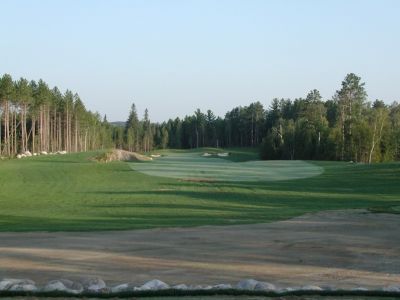Another successful golf season is almost over and this year, like most others, has flown by way too fast. I would like to thank everyone who has made it out to visit our facility for their patronage. The subject matter that I would like to briefly mention for this newsletter is one of intensity of maintenance.
I remember attending a presentation years ago by the superintendent of St. Andrews in Scotland. One thing that stood out in my mind from that speech was the fact that the golf course spent about $600 a year in fertilizer. This is a small fraction of what most facilities in the United States spend on their fertility programs and to hear that such a famous place that hosts regular major tournaments is managed with such minimal inputs was very enlightening.
Somewhere in the past three or four decades, golf course maintenance in the United States has taken a turn away from what works best for playability and instead has focused more on aesthetics-mostly in the form of green color. Thank you Augusta National for misleading the television watching public into thinking that green means good. The main focus of golf course maintenance-especially with the current environmental and economic pressures-should be on playability over green color. Firm and fast conditions (low fertility and dry) should be the goal-not green and lush which leads to other problems-usually in the form of excessive thatch formation that requires more frequent aerification (and more inconvenience to players). The substantial additional costs in the form of fertilizers, additional irrigation requirements, and the labor needed to mow the extra growth are, in the end, not necessary for a fine playing golf course. My belief is that golf courses that embrace this maintenance philosophy in the future will remain profitable and survive future environmental challenges the best.
To illustrate how the Wilderness has embraced this maintenance philosophy on the golf course, I have included two photos. One is of hole 10 over 10 years ago during grow in. Both high fertility and heavy watering are necessary for turf establishment and it shows in the photo in the form of deep green color.

Hole 10 during grow-in over 10 years ago.
The next photo was taken just this past August. Note the areas of the rough that are not deep green in color-in fact they are tan or even brown in some locations. This is intentional for a variety of reasons-better playability, less water consumption, less fertilizer usage, and less money spent on labor mowing and aerifying the areas. My experience has been that most players prefer the leaner, drier surface.

Hole 10 August 2014
I am not saying we totally stop using our irrigation systems and other tools that help us to grow strong turf-we still need them. My point is that we should strive to minimize our inputs to the golf course as much as we can while still providing excellent playability. If the result means the golf course is not always green, so what. As players, we all need to understand this. Anybody can make grass green all the time-the skilled superintendent keeps inputs to a minimum while providing optimal playing conditions. I have attached a recent article by the USGA that mirrors some of the before mentioned concepts with a focus on water conservation.
http://www.usga.org/news/2013/February/Water-For-Playability,-Health,-Not-Color/
Have a great off season and we hope to see you in 2015.
Vincent Dodge CGCS

